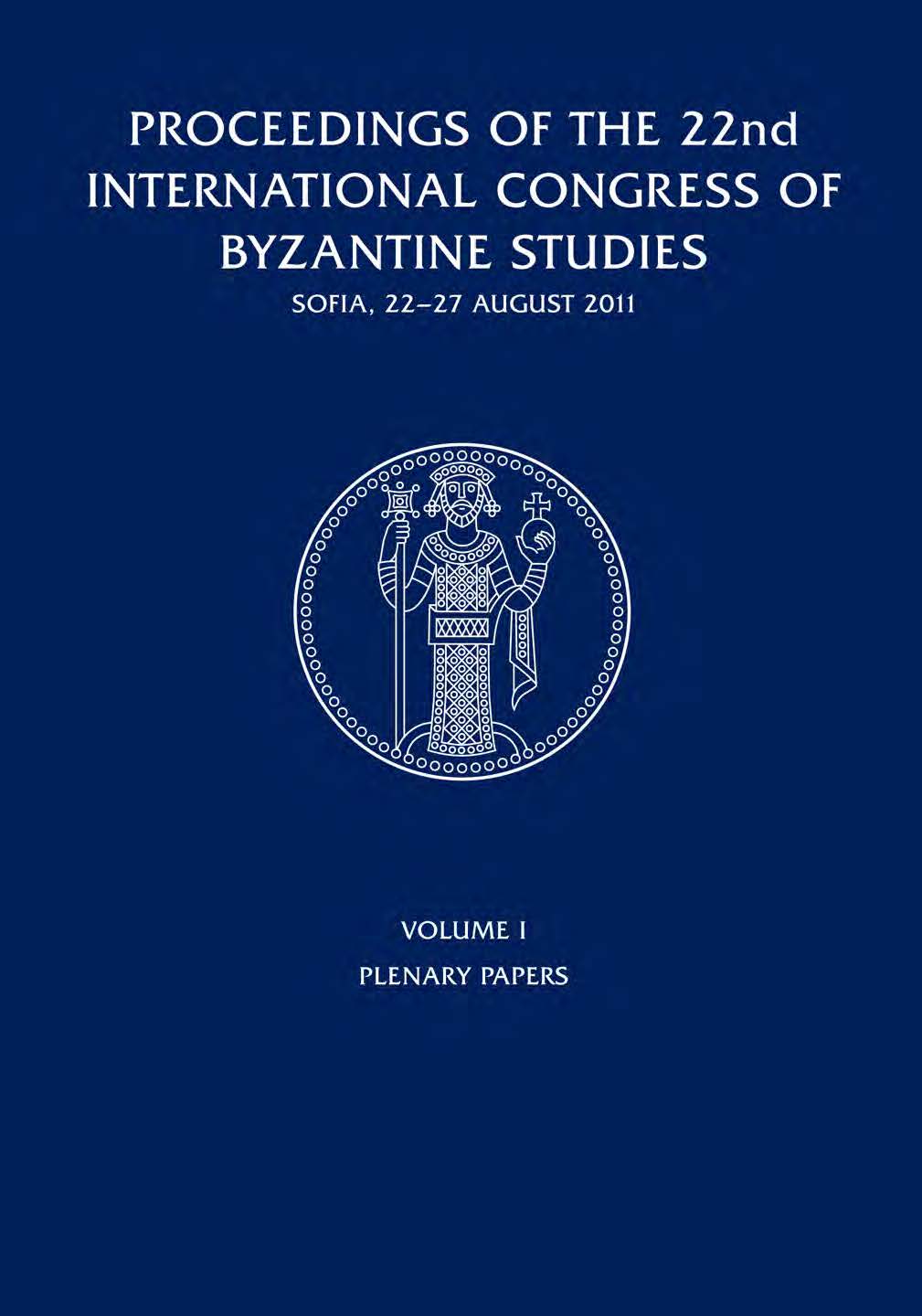
We kindly inform you that, as long as the subject affiliation of our 300.000+ articles is in progress, you might get unsufficient or no results on your third level or second level search. In this case, please broaden your search criteria.


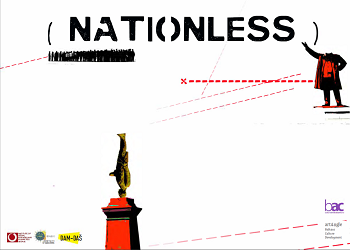
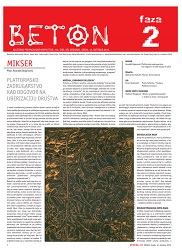
MIKSER, Aranđel Bojanović: Platformsko zadrugarstvo kao odgovor na uberizaciju društva; ŠTRAFTA, Aleksandra Sekulić: Plamen Toma Gotovca; ZID, Zoran Naskovski: Protiv Fašizma / Timeless Political Cartoons; VREME SMRTI I RAZONODE, Vladimir Milojković: Ubistvo u Subotičkoj peščari / Judita na stolu / losing game
More...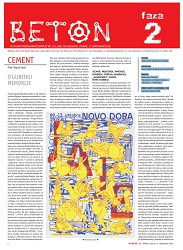
CEMENT, Dejan Vasić: O gubitku memorije; ARMATURA, Jelena Veljić: Izveštaj sa rečnog fronta; ŠTRAFTA, Aleksandra Sekulić: Bilo jednom na Divljem Zapadu... u Americi... u Holivudu...; VREME SMRTI I RAZONODE / ZID, Genitalna panika 2019
More...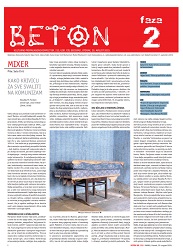
MIXER, Saša Ćirić: Kako krivicu za sve svaliti na komunizam; CEMENT, Dejan Vasić: Tišina je politička odluka; ŠTRAFTA, Savo Romčević, Grupa za konceptualnu politiku: Lingvorasizam; ARMATURA, Jelena Veljić: Sačuvajmo naš parkić!; ZID, Mirjana Dragosavljević: Segmenti izložbe „Tišina je ovde gluvoća“, Bojan Mrđenović: Dobrodošli, Davor Konjikušić: Aura F37, Minipogon / Foto Nenad Porobić
More...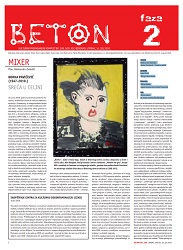
MIXER, Aleksandra Sekulić: Borka Pavićević – Sreća u celini; CEMENT, Saša Ćirić: Nikog nema doma; ŠTRAFTA, Milica Rakić: Legat Konstantina Koče Popovića; ZID, Milica Rakić: Ja nisam oslobodila Beograd
More...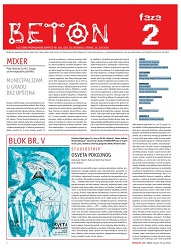
MIXER, Branka Ćurčić, Grupa za konceptualnu politiku: Municipalizam u gradu bez opština; anti CEMENT, Saša Ćirić: I konji konje ubijaju ili Dunavska uteha; ARMATURA, Jelena Veljić: To što oni pričaju i to što mi živimo su dve različite stvari; VREME SMRTI I RAZONODE, Radivoj Šajtinac: Bez ustezanja; ZID, Aurélie William Levaux; BLOK BR. V, Studiostrip: Osveta pokojnog
More...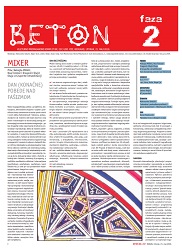
MIXER, Nebojša Milikić, Noa Treister i Dragomir Olujić Oluja iz Grupe Ne-rehabilitaciji: Dan (konačne) pobede nad fašizmom; CEMENT, Saša Ćirić: Lari, Vera, Koča, Kapa i ja; ARMATURA, Jelena Veljić: 67 je previše!; ŠTRAFTA, Aleksandra Sekulić: Podvodne i podvođene prošlosti, i govor budućnosti – Oberhauzen 2019.; ZID, Zoran Naskovski: Mandala i krst / Zbogom oružje
More...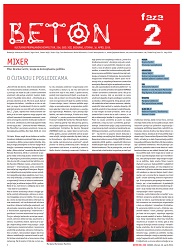
MIXER, Branka Ćurčić: O Ćutanju i posledicama; ARMATURA, Jelena Veljić: Rodna (ne)ravnopravnost: stakleni plafoni i stakleni zidovi; ZID, Aleksandra Sekulić: Beleške na zidu Marijane Markoske – Poly Styrene, ili od ploče do kecelje; ŠTRAFTA, Marijana Cvetković: Ples ispred dimne zavese; BLOK BR. V, Radovan Popović / Studiostrip: Detmen i Grobin
More...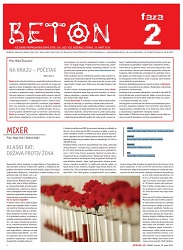
MIXER, Maja Krek i Jelena Veljić: Klasni rat – država protiv žena; CEMENT, Zoran Gajić: Sans-dentalni uslovi protesta; ŠTRAFTA, Milica Rakić: DRUGarica žena; ZID, Milica Rakić: Heroine Jugoslavije
More...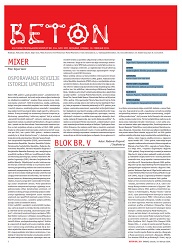
MIXER, Dejan Vasić: Osporavanje revizije istorije umetnosti; CEMENT, Đorđe Krajišnik: Klinička proza postadolescencije; ARMATURA, Adriana Sabo: Sve naše žene; VREME SMRTI I RAZONODE, Đorđe Aćimović: Zabluda psa Svetog Huberta; BLOK BR. V, Radovan Popović / Studiostrip: Branioci porodice; BETON IZLOŽBA, Lana Čmajčanin: Geographical Indication II
More...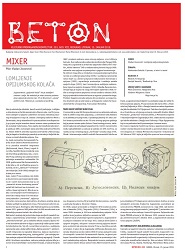
MIXER, Vladan Jovanović: Lomljenje opijumskog kolača; ŠTRAFTA, Aleksandra Sekulić: O porazu, o istini i o borbi; BLOK BR. V, Wostok: Kristijanija, Danijel Savović / Studiostrip: Sivo; VREME SMRTI I RAZONODEMiloš Živanović: Nadgrobna Ana, Vladimir Milojković: Glave, Moje ime je Xu
More...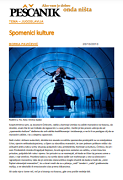
Svojevremeno sam, sa Jovanom Ćirilovim, radila u komisiji Uneska na zaštiti manastira na Kosovu, da skratim, znam šta bi sve trebalo da izgovorim i u ovoj prilici, i koliki je bio proces učenja da od „spomenika kulture“ dođemo do svih oblika kvalifikovanja i izražavanja, e ne bi li se postigao cilj da se manastiri zaštite, i to u stepenu opasnosti.
More...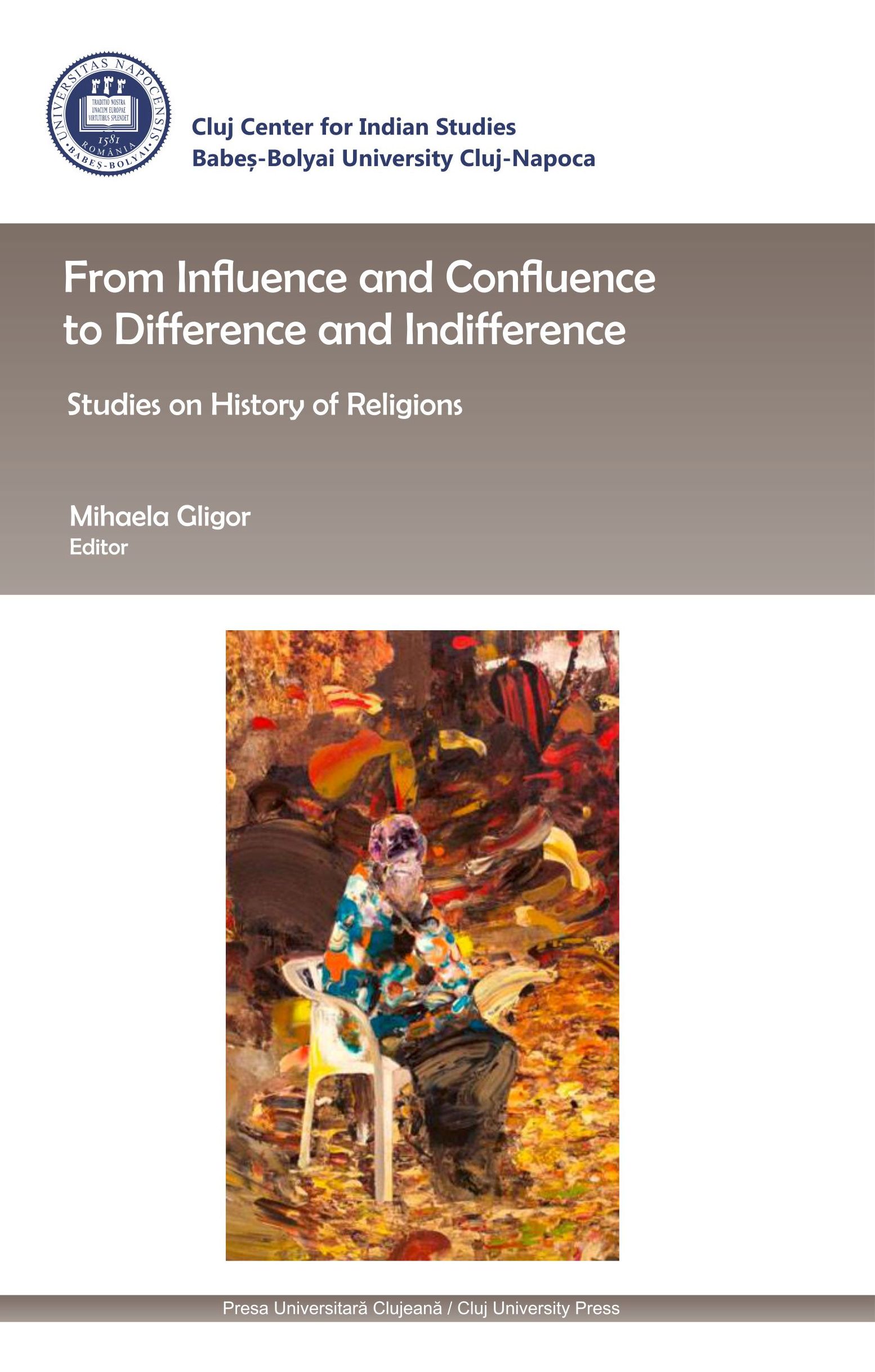
The academic discipline of the history of religions is intrinsically interdisciplinary, and perhaps in a position to contribute particularly useful insights to the dialogue across academic boundaries. This essay is intended to present a very thin slice of cultural responses to our contemporary condition, and to suggest a few possible resources for analysis of them.
More...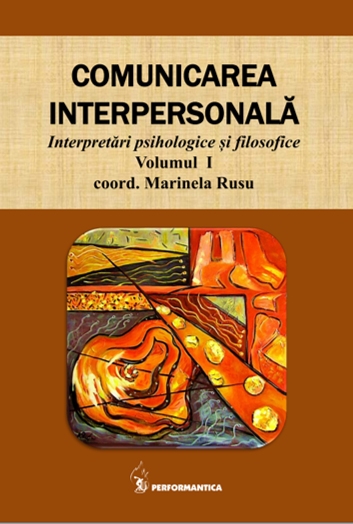
Considering as premise the playwriting of William Shakespeare being one of the touchstones of humanities, in this study we will rise the question about the method through which the work of the classic writer became a way of the contemporary society to reflect some of its most polemized, keen, difficult or challenging topics. Going on, a necessary answer will be given regarding the fact that the plays of the English author get today rather the utilitarian aspect in the scenic approach or if, in fact, there are more nuanced positioning. And there are, as we can not put aside the way that artists are often perceiving the message in a whole, not only on the edge of social, documentary or politic theatre. Therefore, what is it transmitted to us and what do we transmit to history when Shakespearean plays are staged in refuges camps or when debating the veteran’s status. In our approach we will focus on some main artistic directions or forum theatre examples: Love’s Labour’s Lost directed by Corinne Jabel at Kaboul in 2005, the Hamlet Globe Théâtre's production directed on refuges camp in Calais, in 2016, and also Macbeth directed by Peter Callender or the one directed by Amy Attaway from 2019, both talking about the veteran’s or vulnerable groups status. But we believe that each of those visions are simply emphasizing the idea that the great literature fights for fundamental humanist and moral principles.
More...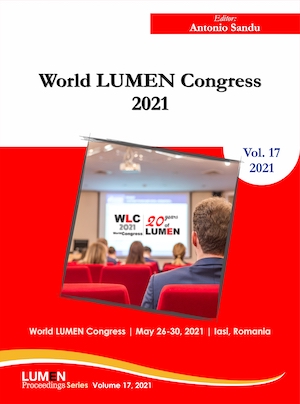
Objectives of this article refer to ways to increase self-confidence in students from different universities in Transylvania manifested by the values of self-depreciation, infatuation and self-esteem. These are realized through the use of complex exercises on music in the form of dance-therapy and body technique.Purpose: elaboration of an action strategy to modify the self-depreciation, self-esteem, infatuation.Hypothesis: by introducing the exercises of body technique and dance-therapy, the aim is to modify the components of the ASSI psychological test: self-depreciation, infatuation and self-esteemMaterial and Methods: statistical processing was performed with the program Stats Direct v.2.7.2. The graphical representation of the results was done with the Excel application (from the Microsoft Office 2010 package). The tests used are: ASSI and an intervention program based on exercises in body technique and dance therapy.The subjects participating in the experiment with a duration of 6 months by 200 students at the Technical University Cluj-Napoca, and the extension from Baia-Mare and from the Academy of Music "Gheorghe Dima" from Cluj-Napoca.The period: of development was between October 2019 and March 2020.The results: of this study are due to the intervention program through exercises in body technique and dance therapy performed by the experimental group compared to the control group. In the case of A-SN it is a good correlation but of the opposite direction, which means that if (A) self-depreciation decreases then (SN) self-esteem increases. In the case of I-SN it is an acceptable correlation and of the same meaning, which means that if (I) the infatuation increases and (SN) the self-esteem increases, were observed statistically significantly significant differences between the two times (p <0.001).Conclusions: Statistically significant differences were observed in the indicators of the ASSI tests (self-depreciation, self-esteem, infatuation) which indicates, that our intervention program in the preliminary study had a positive and measurable impact on students in terms of improving self-depreciation and infatuation, as well as increasing self-esteem.
More...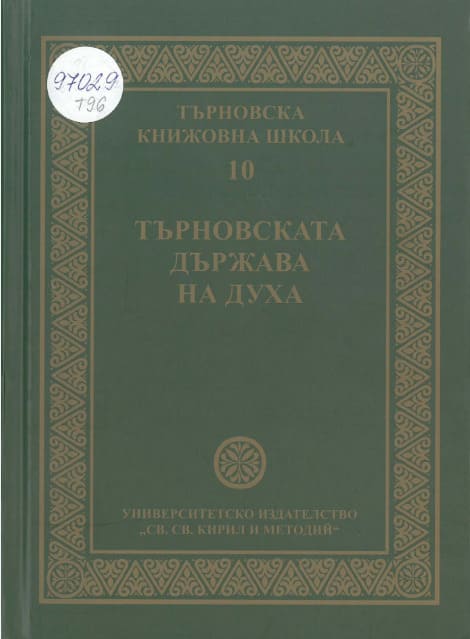
A photograph and a color copy of the fresco, made before the earthquake in 1913 have survived as evidence of the ktitor’s portrait. The ktitor is young and has a black beard, he is clad in a splendid bishop’s vestment with Latin crosses and a black monastic koukoulion. In the image, dedicated to the apostles of the Church of Rome Peter and Paul, he is positioned next to the Virgin Mary with Child on throne, above the western entrance of the church, where there had never been other ktitor’s portrait and inscription and, in fact, that gives grounds for the monumental composition to be dated in the same way as the main painting at the time of bishop Ignatius in 1442. The ktitor is depicted to give the model of the church with both of his hands to the apostles of the Church of Rome St. Peter, who presents him before Christ and his Mother, symbolizing the Church. He seems to be smaller than the other figures and his eyes are looking upwards to the Prince of the Apostles Peter – a vision of the Roman claim for supremacy. The ktitor’s model of the church reflects the state of the building with the external gal¬lery before painting the calendar in the sixteenth century, when the big arch-like barred windows were bricked in connection with the painting of the calendar. Most likely, that earlier reconstruction was done in the mid-fifteenth century, when the town of Turnovo was undertaking major buildings – e.g. the bridge and the mosque of Feruz Bey (1435). To identify the Turnovo metropolitan Ignatius, it is the style of the ktitor’s composition that also helps and the accompanying inscription with palaeographic characteristics that are specific for the signatures of the painter Nikolas (e.g. the anagram from 1442). It is known that Ignatius and the Ecumenical Patriarch Joseph II came from the Bulgarian tsarist family and had been in one and the same kellion of the Mount Athos monastery Alipu. That explains the exceptional presence of St. Athanasius of Mount Athos in the altar near the patron of metropolitan St. Ignatius the God-bearer in the diaconicon where the order of dressing was taking place. The Tree of Jesse is contaminated with the Genealogy of Christ and covers the whole space of the church. It unifies the conceptual program by spreading its branches around the Virgin Mary with Child in the apse, the arcade of the triumphant Heavenly Church with the parents of the Mother of God, the martyr priests and warriors, and the scenes from the life of Christ. A painting by Boris Denev painted before the earthquake in 1913 shows the lying Jesse at the southern pillar of the narthex where the stem of the genealogy tree is sprouting out. The vision is related to the genealogy in the Gospels of Matthew and Luke, and also in the Hermeneia of Dionysius of Fourna. The Genealogy of Matthew according to his father’s royal line starting from Abraham, Isaac and Jacob is associated with the one of Luke, according to his maternal line from the ancestors of the |Virgin Mary, Adam, Eve, and Abel, who never occupied the throne of the Jews and in this connection there is the unique branch with the righteous women. The origin of the two genealogies was on the western wall of the narthex facing Jesse. The direction of the visual narrative from left to right is indicated by the image of the semi full-face of Tara, the father of Patriarch Abraham, depicted on the western end of the southern wall of the narthex. The genealogy of Luke on the western wall of the narthex over the entrance had been developing north-wise in the narthex and the naos. The images of their descendants are partially preserved on the northern wall of the narthex (Noah with the Ark and his sons Sim and Japheth) and the naos (Nahor, the father of Tara). The genealogy after Mat¬thew on the western wall of the narthex, south of the entrance, spread over the apse with a unique branch, dedicated to the twelve sons of Patriarch Jacob. Further on, there are the sons of Judah, the Patriarch Kings Zar on the northern pillar in the narthex, and Phares on the southern wall of the narthex next to Tara, where it continues eastward reaching Jesse. From there on, the genealogy is continuing on the northern pillar with Patriarch Ravoam and then in the central arch next to Christ. The Tree of Jesse includes also images from the Hermeneia – e.g. the righteous women, the prophet Nathan, and King Joshua in the southern arch between the narthex and the naos, Patriarch Melchizedek at the northern pillar of the narthex and the pointed by him righteous men named Tobit and Tobias with scrolls unfolded in the northern arch between the narthex and the naos. The connection between the Old Testament and the New Testament is achieved along the west-east axis, from the narthex through the naos to the altar. Depicted in the apse is a branch with the Covenant of Patriarch Jacob as a symbol of the Old Testament unity and prefiguration of the Virgin Mary with Child – cf. the ewer with heavenly manna of Levi and Christ in the hands of Judas. Depicted in the central arch between the narthex and the naos is an allegory of the New Testament unity – the Council of Jerusalem, presented by God’s brethren Jacob and Judas, and the leaders of the apostles Peter and Paul, based of the Seven Ecumenical Synods in the narthex. The tree of Jesse is an element of imperial propaganda, as it is an evidence of the power being taken over from father to son. Most kings have their hands covered for the Holy Communion, but some point to the visual text – e.g. king Zar, the first-born son of Judas, points with his right hand the younger brother Perez from whom originates the family line of Jesse, and his great-grandson, King Aminadav, points with his left hand to his son Nahshon who is called upon to lead Judah’s family line before Moses during the escape of the Jews from Sinai. In the central arch, King Jotham points out to his father Uzziah, who during his life, made him a co-ruler, whereas the kings Sadok and his son Ahim, as well as their descendant St. Joseph, point to the Child dressed in golden vestments as in a dream of the prophet Jesse.
More...
In the second half of the 17th century a Boka-Kotorska icon painting school was formed. Despite its popularity, extensive research and publications have been made on representative personalities. In the museum of the medieval town of Dubrovnik today there are 35 icons belonging to the Boka-Kotor School. The amount of works attributed to the artistic range of the school is not exhausted. In the first decades of the eighteenth century icons appeared in the most elite and high-paying commercial territories, churches and monasteries, which are post-Byzantine. Even in stylistic terms, as I have already said, they have nothing to do with the old masterpieces of the Dubrovnik masters. The first distinctive feature is that the models and models of iconography that will be used in the work of this school are of post-Byzantine origin. For example, the composition “Deisis”, which is strongly represented in the work of some generations of masters, is indicative. Of course, Western prototypes, decorative elements characteristic of Baroque painting, are coming into the art of later periods. The Tryavna iconographic school, despite its individual characteristics, also follows the traces of naivetry and the shaping of shapes. Undoubtedly, there are long distances, distant centres developing independently of each other. But, on the other hand, the boundaries of art come closer, even cross, especially when it comes to religious-popular ideas and the progression of visual rhythm and reflection of creative consciousness. The present study is devoted to these issues and a comparative analysis of various inscriptions and stylistic features.
More...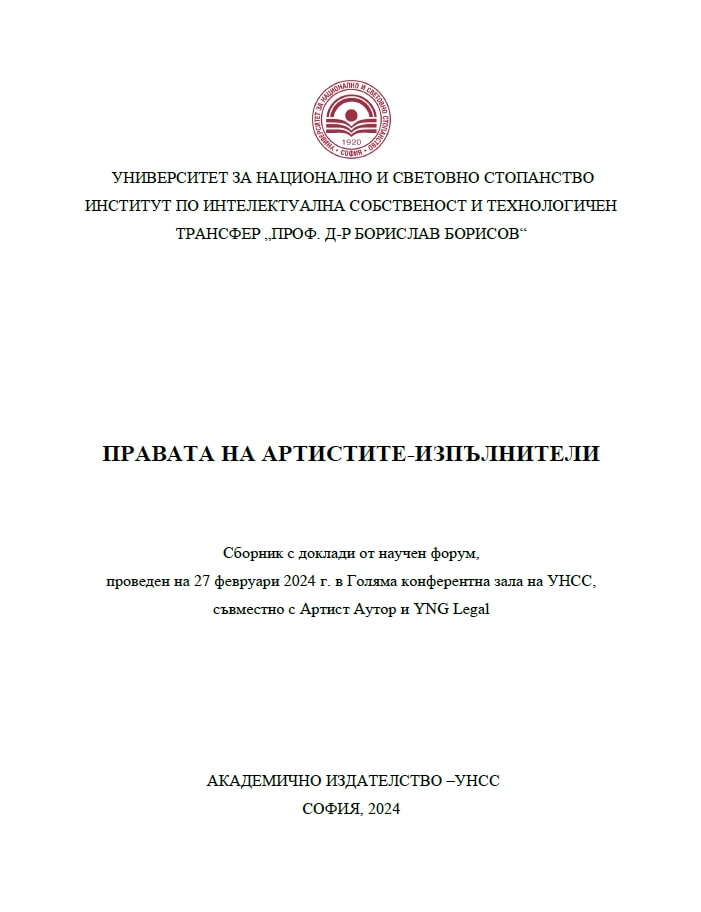
The subject matter of this paper are patented inventions owned by world-famous personalities. The nature of inventions and ways of protecting innovative products in the music and film business as inventions are outlined. Patent protection of inventions under national patent laws is identified, as well as exceptions to protection. It analyses the role of inventions as a fundamental object of industrial property, which provides its owner with a monopoly advantage and provides him with various opportunities for realization and profit. Examples are given of inventions created by world-famous personalities such as musicians, producers, and actors.
More...